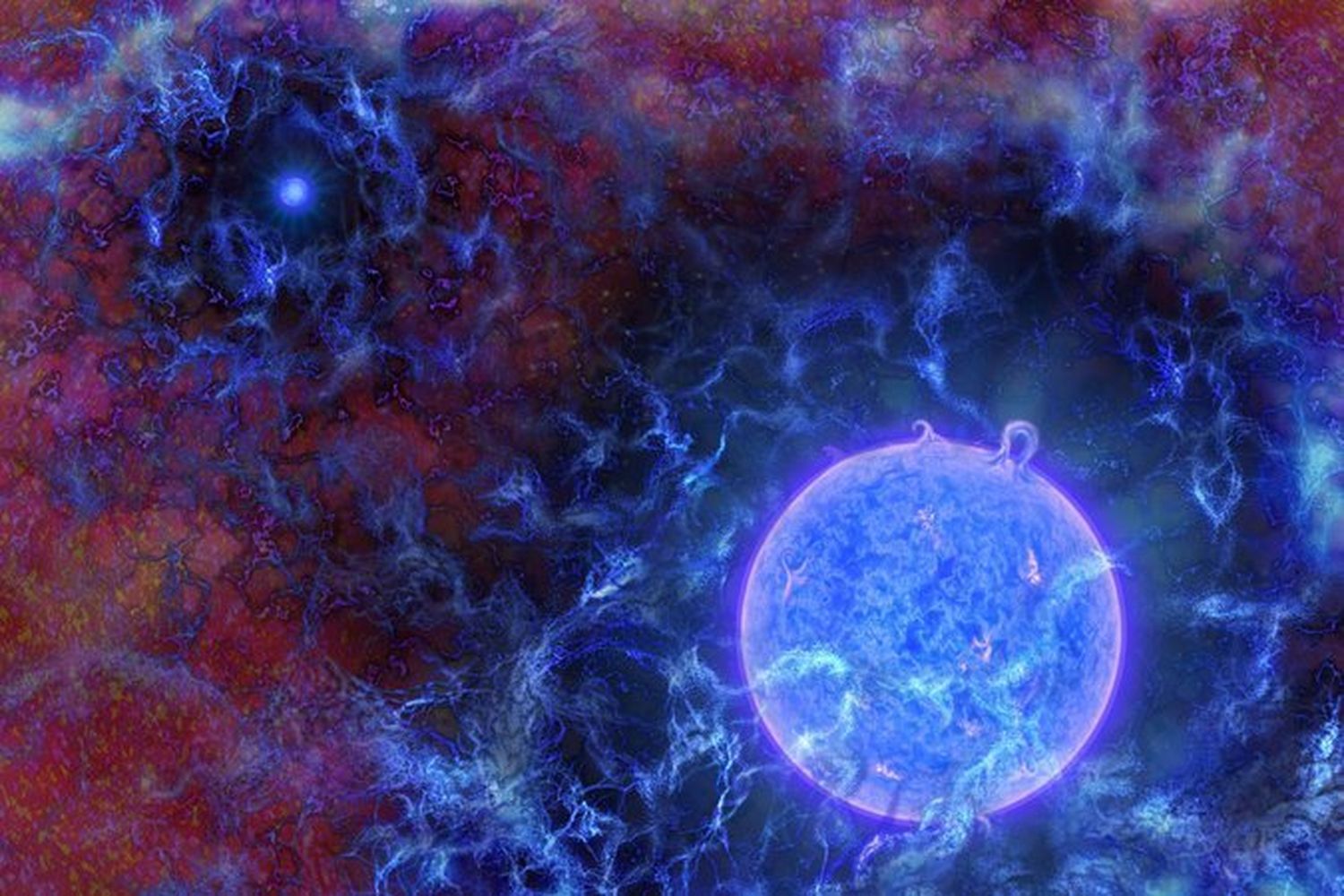
A new study published in the journal Nature details the traces of the first ever stars formed in the universe.
What makes the study interesting is, among other things, that the proportion of matter in the universe seems to have shrunk significantly more than expected in the almost 200 million years that elapsed after the big bang until the first stars were formed.
The explanation for this apparent discrepancy in the data could be dark matter. The researchers argue that the faster cooling than expected of visible matter in stars is due to the fact that the yet unknown dark matter cooled it down.
The further back in time you go, the harder it is to spot stars directly, using instruments such as NASA’s Hubble Space Telescope. Therefore, the research team took an indirect route, searching for the fingerprints these early stars likely left on the cosmic background radiation (CMB)—the ancient light left over from the Big Bang.
The team used a crude-looking instrument the size of a small table, the Edges (Experiment to Detect Global EoR Signature) antenna that sits in a remote region of Western Australia where there are few human sources of radio waves to interfere with incoming signals from the distant universe.

The detected signal was about twice as strong as the team expected. There are two possible explanations for this surprising intensity, either the radio background was quite a bit stronger in those early days than scientists had thought, or the hydrogen gas was significantly cooler.
Leaning towards the second possibility, because it’s tough to imagine a process that would increase the radio background to the necessary levels, There is a promising contender to possibly explain this, dark matter, the elusive substance that is thought to make up 85% of the matter in the universe.
If confirmed, these results would suggest a new form of interaction between normal matter and dark matter, mediated by a fundamental force that until now has been entirely unknown.
Reference:
Judd D. Bowman, Alan E. E. Rogers, Raul A. Monsalve, Thomas J. Mozdzen & Nivedita Mahesh An absorption profile centred at 78 megahertz in the sky-averaged spectrum doi:10.1038/nature25792






















